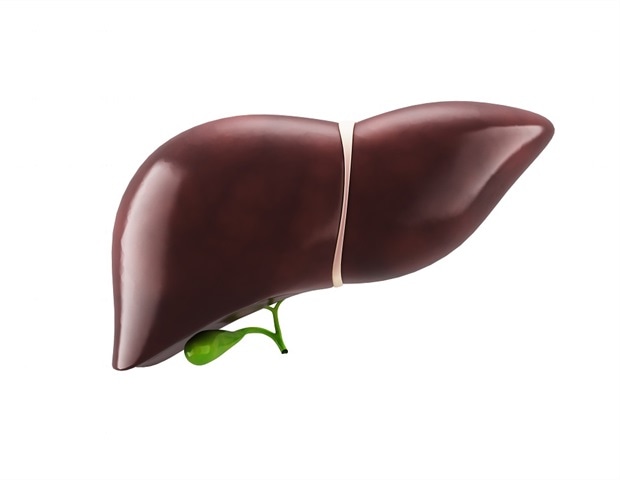
Liver ailments, each acute and continual, proceed to pose vital scientific challenges on account of excessive morbidity and mortality charges. Acute liver damage (ALI) attributable to acetaminophen (APAP) overdose, hepatic ischemia-reperfusion damage (HIRI), and continual situations like nonalcoholic fatty liver illness (NAFLD) and alcohol-associated liver illness (ALD) are influenced by HMGB1-mediated pathways. HMGB1 is launched from injured or necrotic liver cells and triggers inflammatory responses. Its circulating ranges have been related to illness severity in liver situations, marking it as a promising biomarker and therapeutic goal.
HMGB1 construction and capabilities
HMGB1 is a non-histone nuclear protein with three distinct domains liable for DNA-binding and regulatory capabilities. Inside the nucleus, HMGB1 aids in DNA restore, chromosomal upkeep, and cell cycle regulation. As soon as launched extracellularly, it binds to receptors comparable to RAGE and TLR4, amplifying inflammatory signaling and contributing to liver injury via the activation of immune cells. Moreover, HMGB1 performs a task in autophagy, a course of integral to cell survival and liver tissue regeneration.
Receptors and signaling pathways
HMGB1’s interactions with its main receptors, RAGE and TLR4, are important to its function in liver illness. Upon binding, these receptors provoke pro-inflammatory signaling pathways such because the NF-κB and mitogen-activated protein kinases (MAPK) cascades, exacerbating liver irritation and damage. These interactions additionally contribute to the development of situations like NAFLD, ALD, and liver fibrosis. Importantly, the HMGB1-RAGE axis additionally performs a task in hepatocellular carcinoma (HCC), influencing tumor proliferation, immune evasion, and metastasis.
Submit-Translational Modifications (PTMs)
The purposeful range of HMGB1 is closely regulated by its PTMs, together with acetylation, phosphorylation, oxidation, and lactylation. These modifications management the discharge, localization, and exercise of HMGB1, impacting its function in liver illness. For example, acetylation of HMGB1 facilitates its translocation from the nucleus to the cytoplasm, contributing to irritation in ALD and sepsis. Phosphorylation equally aids in HMGB1’s extracellular launch, whereas oxidation alters its interactions with receptors, enhancing fibrotic processes and tumor cell migration. A novel PTM, lactylation, has been linked to macrophage activation in HIRI, additional increasing the understanding of HMGB1’s regulatory mechanisms.
Roles of HMGB1 in acute liver ailments
In acute liver ailments like APAP-induced liver damage, HMGB1 serves as a key mediator of immune responses, selling the recruitment of neutrophils and macrophages, which exacerbate liver injury. The HMGB1-TLR4 signaling pathway has been notably implicated within the inflammatory cascades following liver damage. Therapeutic methods concentrating on HMGB1, comparable to monoclonal antibodies and inhibitors of its launch, have proven promise in lowering liver injury in animal fashions. Equally, in HIRI, inhibiting HMGB1 launch has been efficient in mitigating liver injury and irritation, emphasizing its potential as a therapeutic goal.
Roles of HMGB1 in continual liver ailments
In continual liver ailments like NAFLD and ALD, HMGB1 performs twin roles relying on its mobile localization. Extracellular HMGB1 promotes inflammatory pathways that speed up the development from easy steatosis to extra extreme varieties like nonalcoholic steatohepatitis (NASH). Intracellularly, HMGB1 seems to guard in opposition to lipotoxicity by sustaining endoplasmic reticulum (ER) homeostasis. Moreover, in liver fibrosis, HMGB1 prompts hepatic stellate cells (HSCs), contributing to the fibrotic response, whereas its modulation of immune responses via macrophage polarization additional exacerbates fibrosis.
Therapeutic potential
Given HMGB1’s important involvement in liver illness pathogenesis, therapeutic methods aimed toward modulating its launch, operate, or receptor interactions have gained curiosity. Anti-HMGB1 antibodies, small-molecule inhibitors, and pure compounds like curcumin and glycyrrhizin present potential in assuaging liver irritation and fibrosis. Moreover, concentrating on particular PTMs of HMGB1, comparable to acetylation and lactylation, provides new avenues for therapeutic interventions, notably in treating liver fibrosis and HCC.
Conclusions
HMGB1 is an integral participant in liver illness, influencing each inflammatory and fibrotic pathways. Its roles in acute liver damage, continual situations, and liver most cancers make it a priceless diagnostic and therapeutic goal. Ongoing analysis into HMGB1’s signaling mechanisms, PTMs, and receptor interactions guarantees to yield new remedies for liver ailments. Nonetheless, additional scientific research are wanted to totally notice the therapeutic potential of concentrating on HMGB1.
Supply:
Journal reference:
Wang, L., et al. (2024) Rising Roles of Excessive-mobility Group Field-1 in Liver Illness. Journal of Medical and Translational Hepatology. doi.org/10.14218/JCTH.2024.00317.

